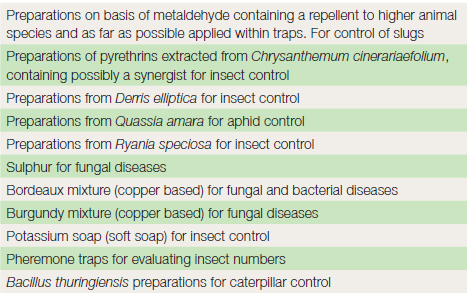Integrated control
ContentIn integrated control the main hazard is the unintentional killing of biological control organisms by pesticides (which are being used for pests that cannot be controlled biologically). When using integrated control, risks can be minimized by choosing the appropriate pesticides that do not harm biological control organisms. Integrated control, increasingly termed ‘Integrated Pest Management’ or IPM, requires the grower to understand all types of control measures, particularly biological and chemical, in order that they complement each other. In greenhouse production of cucumbers, the Encarsia formosa parasite and Phytoseiulus persimilis predator are used for whitefly and red spider mite control respectively. However, the other harmful pest and disease species must be controlled, often by chemical means, without killing the parasites and predators. Drenches of systemic insecticide, such as pirimicarb against aphids, soil insecticides, such as deltamethrin against thrips pupae, and systemic fungicide drenches, such as carbendazim against wilt diseases and powdery mildew, are all applied away from the sensitive biological control organisms. Similarly, high volume sprays of selective chemicals, such as iprodione against grey mould, Bacillus thuringiensis extracts against caterpillars, have little or no effect on the parasite and predator. Similar considerations may be given in control of apple pests and diseases. Reduced usage of extremely toxic winter washes and increased use of selective caterpillar and powdery mildew control by chemicals, such as diflubenzuron and fenarimol respectively, allow the almost unhindered build-up of beneficial organisms, such as predatory capsid and mites.
The methods of organic growers emphasize the non-chemical practices in plant protection (as well as in soil fertility). Hedges are developed within 100 m of production areas and are clipped only one year in four to maintain natural predators and parasites. Rotations are closely followed to enable soil-borne pest or disease decline, while encouraging soil fertility. Resistant cultivars of plant are chosen and judicious use of mechanical cultivations and flame weeding enables pests, diseases and weeds to be exposed or buried. A restricted choice of pesticide products such as pyrethrins, derris, metaldehyde (with repellant), sulphur, copper salts and soft soap are allowed to be applied, should the need arise. Bacillus thuringiensis extract, and also pheremone attractants, are similarly used. Table 16.4 gives a list of permitted substances. |





